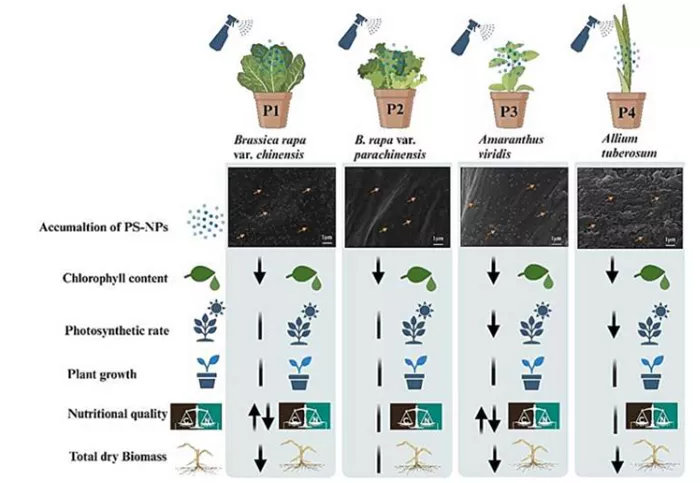Plastic debris in the environment can break down into smaller particles known as micro-nanoplastics (MNPs), which may pose serious risks to plants, including reduced productivity and nutritional value. A new study by researchers at Xishuangbanna Tropical Botanical Garden (XTBG) explores the impact of polystyrene nanoplastics (PS-NPs) on leafy vegetables and their ecological consequences.
The findings, published in Journal of Hazardous Materials, shed light on how PS-NPs accumulate in the leaves of common vegetables and affect their growth. The researchers examined four types of leafy vegetables—Brassica rapa var. chinensis, Amaranthus viridis, Brassica rapa var. parachinensis, and Allium tuberosum—by exposing them to varying concentrations of PS-NPs in controlled conditions.
Using microscopy, the researchers observed that PS-NPs were able to accumulate in the leaves, with the degree of accumulation differing depending on the species, the side of the leaf, and other factors. Vegetables with smooth leaf surfaces and fewer protective features, such as trichomes (hair-like structures) and epicuticular wax, were found to absorb more nanoplastics compared to those with these protective features.
The study also revealed that smaller PS-NP particles were particularly efficient at penetrating the leaf’s cuticle and epidermis cells. This exposure led to significant physiological effects, including reduced chlorophyll content and lower photosynthesis rates, which in turn hampered the plants’ growth and overall health.
“These results highlight the potential dangers of PS-NP accumulation in agricultural environments,” said Xu Guorui, one of the study’s corresponding authors and a researcher at XTBG. “The risks to plant health and food security should not be underestimated.”
The research underscores the need for greater attention to the impact of micro-nanoplastics on both plant health and the broader ecosystem, particularly in agricultural production and environmental conservation.
Related topics:
- Study Reveals How Non-Native Plants Fuel Invasive Insect Surges
- Exploring Native Plants in Fall and Winter with Morris Garden Club
- Ohio State Trials: Plants Flourish Even Amid Drought Conditions


